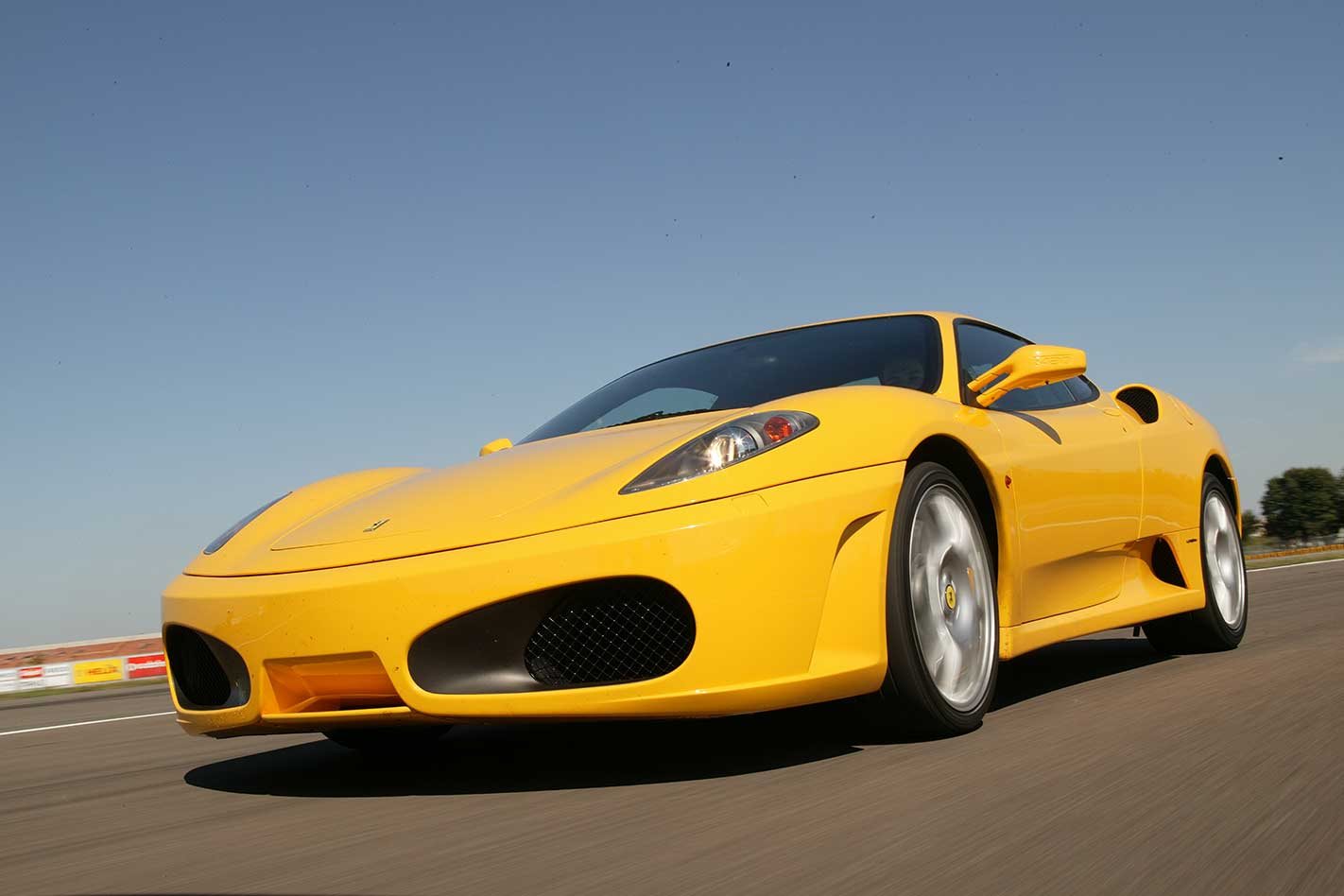As usual, the drive programme for the Ferrari F430 is a time-warp exercise. From nine in the morning till two in the afternoon, we are left to our own devices on quiet country backroads.
This review was originally published in MOTOR’s December 2004 issue
Then from two to five, the car will be put to the test on Ferrari’s own Fiorano circuit where the new mid-engine coupe is a full three seconds faster than the F360 Modena it replaces. And while it doesn’t quite beat the Enzo, an all-or-nothing one-minute-twenty-five-seconds lap at Fiorano reduces the advantage of the 485kW Ferrari supercar to an unexpectedly marginal two seconds.
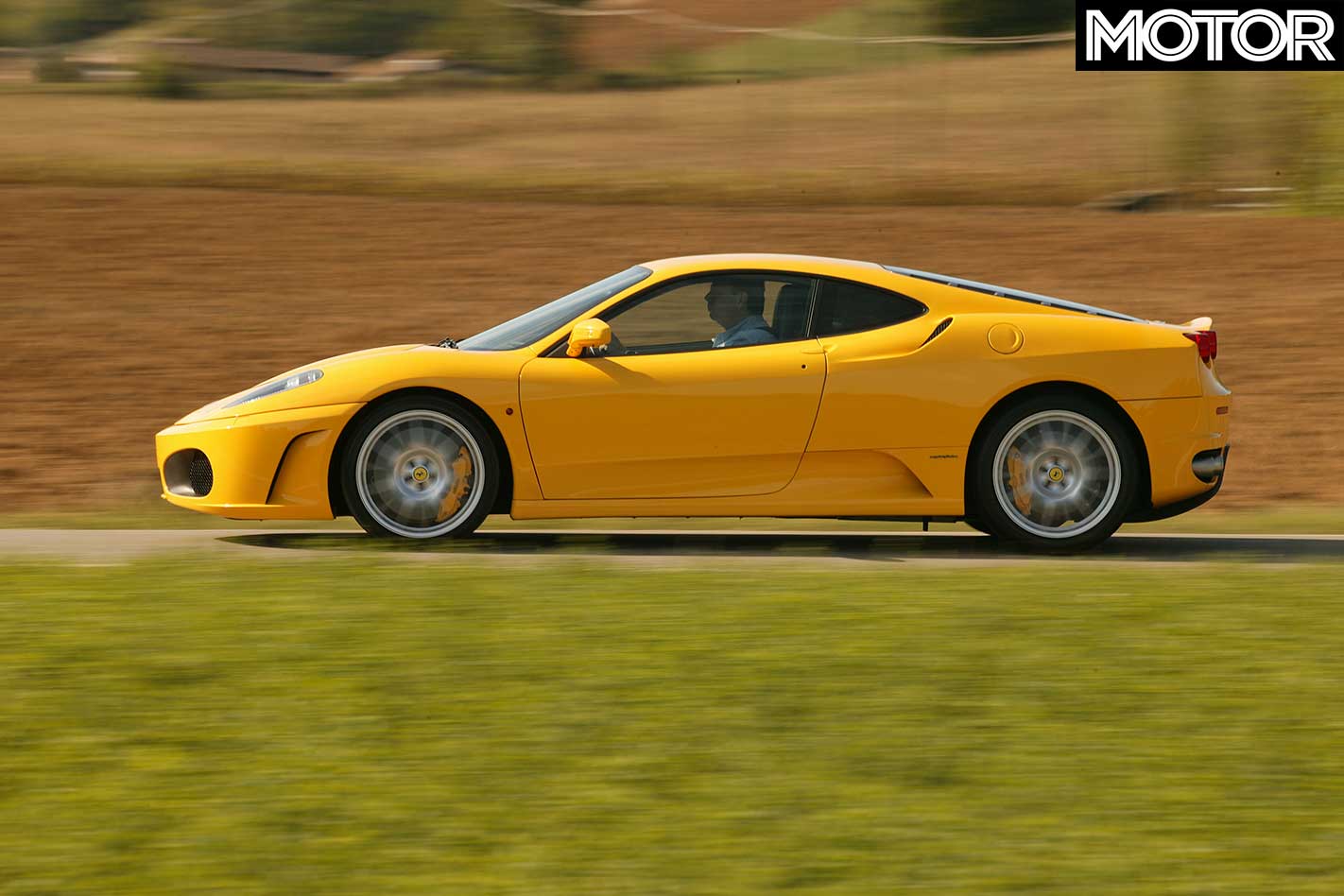
Also new are the 19-inch 10-spoke alloys, the four chrome-tipped tailpipes, the substantially bigger radiators and the clever underbody aerodynamics which increase the maximum downforce by 50 percent in comparison to the Modena.
Although the cockpit looks familiar, it has been partly reworked, borrowing items from the iconic Challenge Stradale, including a contrasting rev counter (with a yellow or red dial) and aluminium pedals. Sadly, the cheapo Fiat switchgear, tacky carbon-fibre applications and plastic air vent bezels take the shine off a class act.
What makes all the difference between old and new is the beautifully detailed engine. A development of the Maserati 4.2-litre engine, the new 4.3-litre is still a 32-valve 90 degree V8 (the 360 was a 40-valver), but the power output has jumped to 360kW (up 23 percent from Modena) at 8500rpm, and maximum torque is now an anabolic 465Nm (up 25 percent) at 5250rpm.
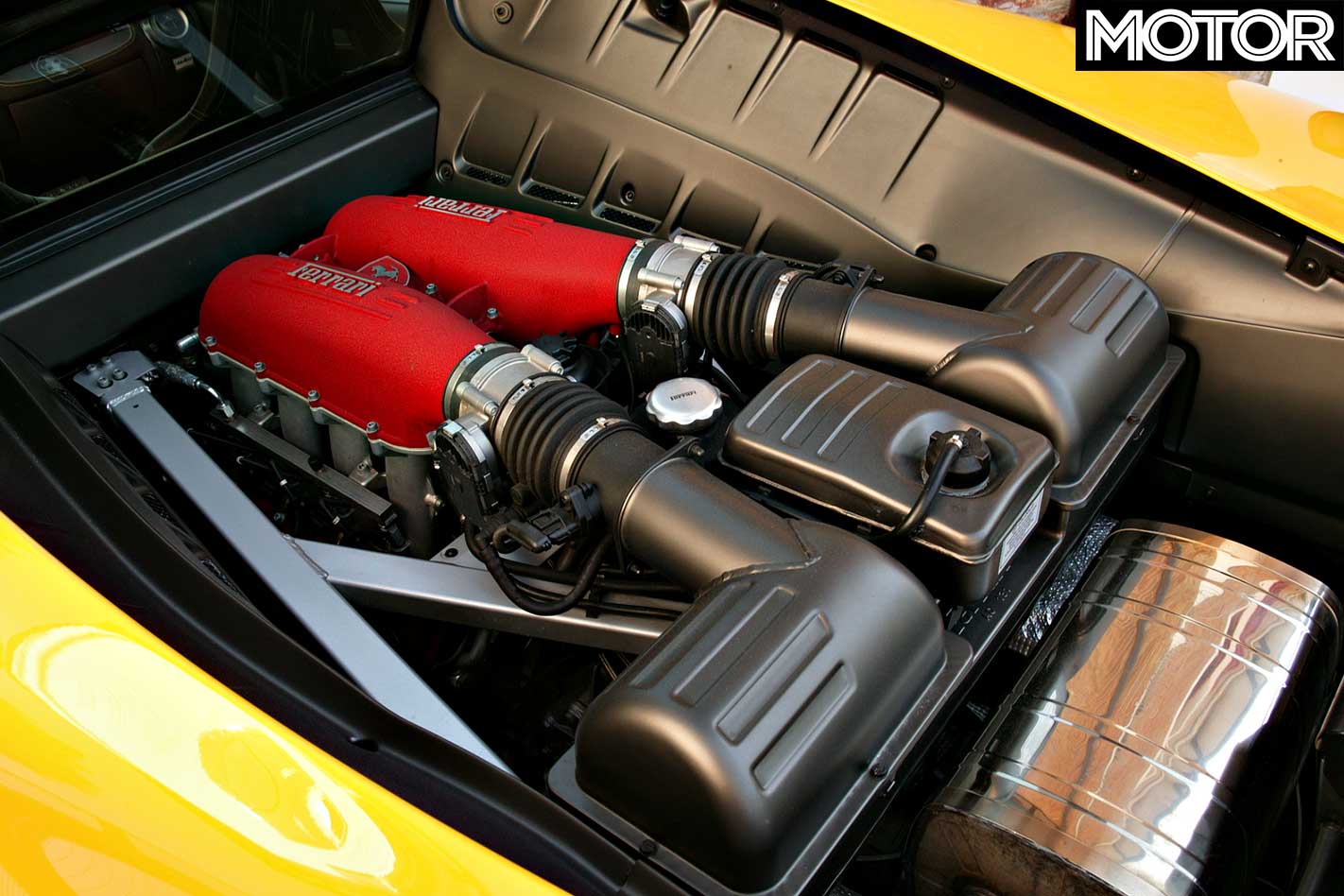
In launch-control mode, the F430 takes only 4.0 seconds (4.5 seconds for Modena) to accelerate from 0-100km/h. And top speed is an athletic 315km/h (295km/h for Modena). Sharing some of its DNA with the unit installed in the latest Maserati Quattroporte, the 4.3-litre Ferrari motor incorporates a flat-plane crankshaft with five main bearings, a quattrovalvole head inspired by F1, variable intake and exhaust valve timing, and dry sump lubrication with three scavenge pumps.
To lower the car’s centre of gravity, the Ferrari engineers integrated the engine oil tank in the gearbox housing and fitted a smaller-diameter twin-plate clutch. Although 75 percent of the customers specify the optional, once again improved F1 transmission, the standard six-speed gearbox is still available.
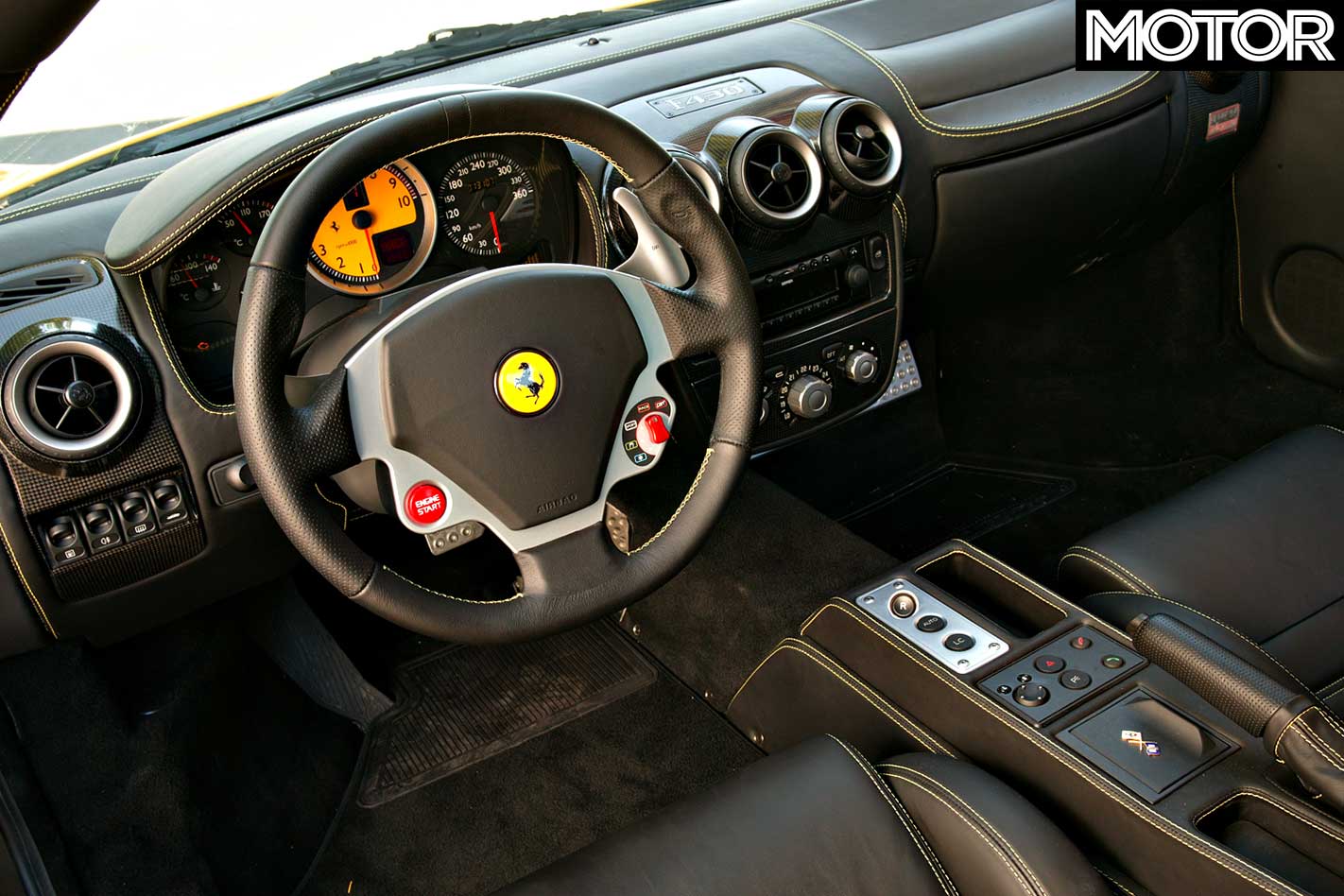
After the press conference, a man in rosso corsa livery hands out the keys and makes a few suggestions. “Beware of the Carabinieri, and bring the vehicle back in one piece, per favore.”
I get the yellow Fazza, which is bound to attract the law like a topless dancer inside the Vatican, but the only cop we see gives us an enthusiastic thumbs up.
The test car is fitted with black leather racing buckets and four-point harnesses. The dashboard looks familiar, but the three-spoke leather-rimmed steering wheel is all-new. It incorporates a fire-red starter button as well as what Schumi and Rubinho call the manettino. A little red toggle switch, it selects one of five different driving modes: ice, wet, sport, race and CST off. And off really does mean off: no traction control, no brake actuation, and no support to be expected from the electronic throttle whatsoever.

The only propulsion aid which remains active at all times is the new E-Diff, short for electronically controlled differential. Similar in concept to the BMW M diff, this fast-acting device employs two clutch units to govern the torque flow to the driveshafts in relation to twist action, wheel slip and acceleration.
The idea is to tame the rear end and to improve traction during hard cornering, especially when tight radii and slippery surfaces are involved. According to the senior project manager, the E-Diff is almost as effective as all-wheel drive, which would have added at least 70kg in weight.

No Ferrari has ever sounded dull, but this V8 is an aural treat. The dark-voiced 4.3-litre unit makes all the right noises. Take-off produces a hectic snarl which quickly evolves into a loud and dense staccato, the initially disciplined mid-range revs sound rich and raw and raucous as soon as the engine opens up and fills its lungs with intake air, the high-pitched spiralling climax fuses Verdi and Wagner with Motörhead and Metallica.
We were sent on a drive route no other car manufacturer would have dared to select. Narrow roads and tight corners are as typically Italian as pasta and vino rosso for lunch, but this three-hour tour de force threw in broken pavement, crash-bang dips, sky’s-the-limit crests and heart-stopping single-lane sections, which would have proved tough for a new SUV, let alone a Ferrari with marginal ground clearance.
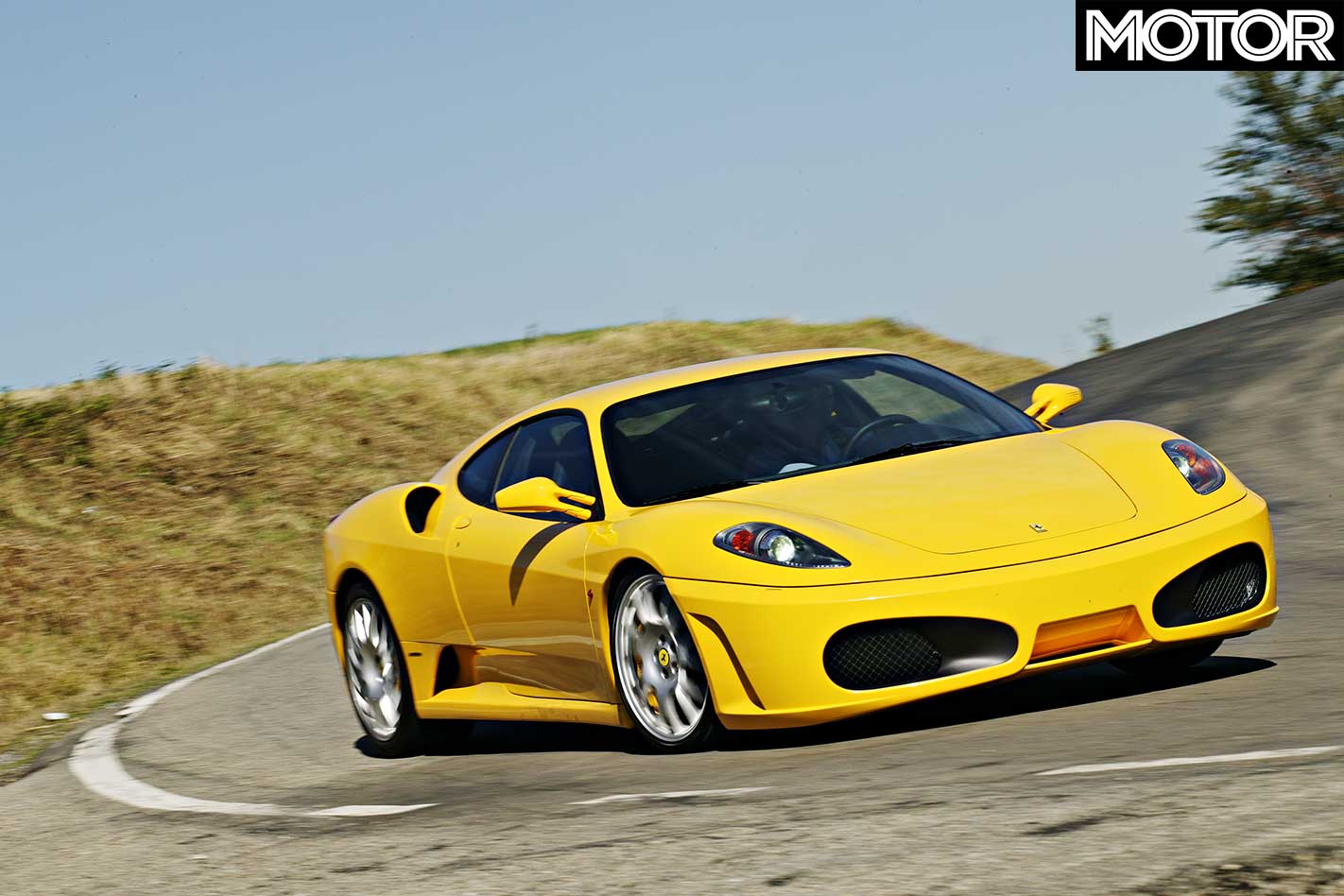
But, to everyone’s surprise, nothing was bent, broken or scratched. The new Skyhook suspension offers enough spring travel, even in the stiff race setting. Sure, the car occasionally bottomed out and scraped its nose once or twice, but the F430 always maintained its composure, and its directional stability was astonishing. E-Diff helped here, too, because it always distributes the torque to the wheel that needs it most, and it does so quickly and progressively.
After 90-kilometres of esses, descents and blind crests, the route spat us out at the bottom of a valley which promised, at last, smooth tarmac and fast bends. The F430 mastered both terrains with aplomb.
Its oversized brakes (carbon ceramic brakes are optional) are more than strong enough to reign in the car before the apex, the Goodyears are sticky enough to snake along the chosen line, and the electronic knee joints of the suspension are compliant enough to absorb the patchwork topography.
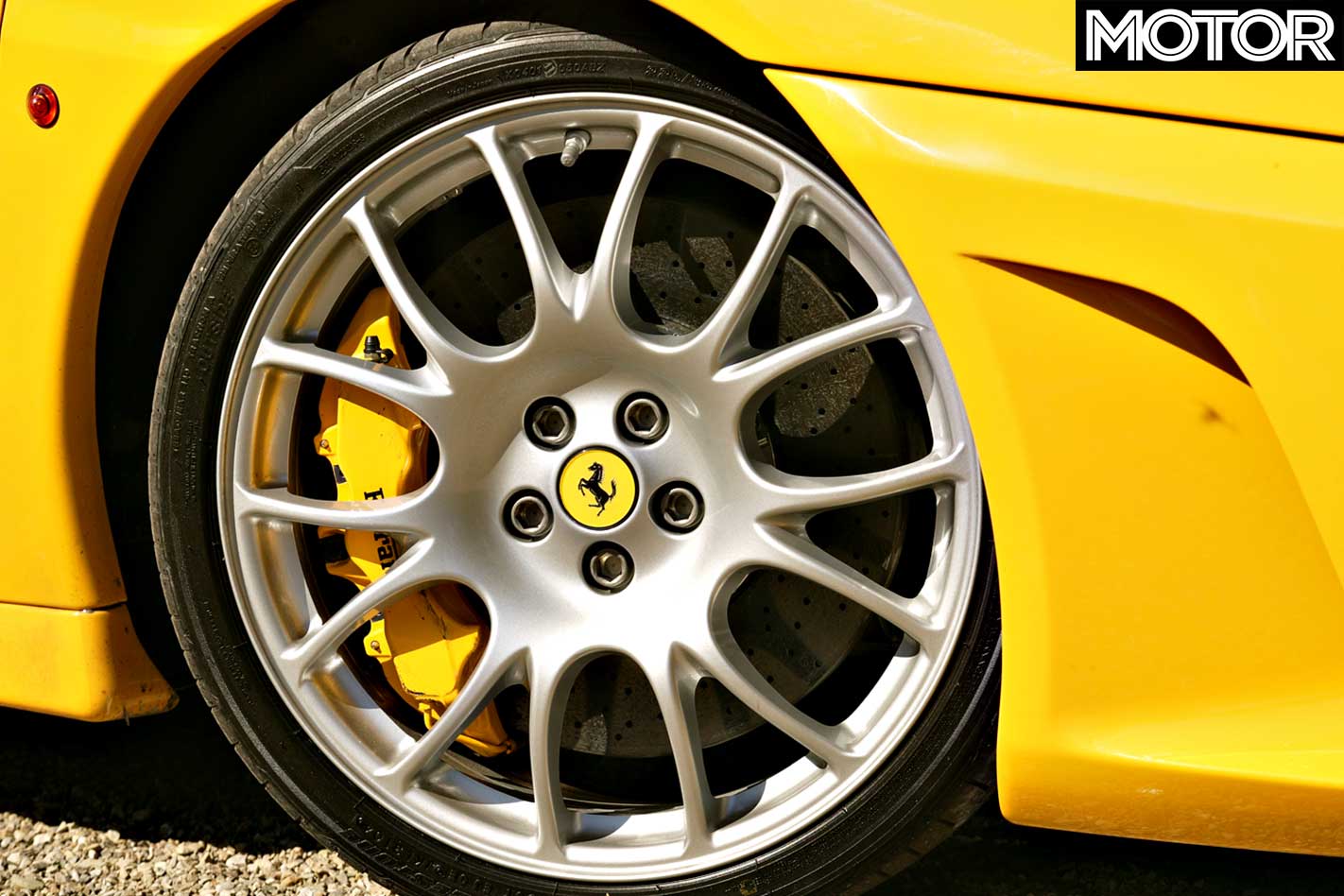
When the twisty bit was over, there were only two items on my wish list: quicker steering and slightly bigger shift paddles. Out in the open, where you can see far enough ahead to give this car a heavy boot, the steering is just fine. It is neither overdamped nor too eager in the straight-ahead position, instead it seems to intuitively know the right rhythm, striking a compelling balance between chatty and muted.
At 1450kg, the new Ferrari is 60kg heavier than the 360. But the weight gain increases torsional stiffness by 20 percent, and the standard equipment now includes a combined satnav/CD player, phone and electrically adjustable seats. In combination with the brawny 360kW engine, the F430 is not only quicker than the awesome Challenge Stradale, it’s also substantially more smooth, more refined and better balanced.
Instead of constantly fighting the car and the road, the successor to the F360 encourages the driver to keep it on a long leash. Admittedly, it takes a while for confidence to grow, but by mid-morning I had learned to synchronize my inputs to the greater talents of this vehicle.

In the F430, late upshifts are okay, even if you’re about to run out of blacktop, early downshifts are safe, even though the tail will momentarily feel light and twitchy, aggressive turn-ins are fine, thanks to the suction-cup roadholding, and hitting the brakes at five past midnight isn’t a problem because those huge stoppers reel you in with vigour.
Despite all the speed and the drama, this car is not a loose cannon. It combines an infectious playfulness with reassuring road manners.
Is this Ferrari worth selling your house for? Probably not. But it is so much better than the 360 which was yesterday’s darling, and in terms of performance it closes in on the Enzo, which suddenly looks less desirable. As far as sheer ability, street cred and value for money are concerned, this is definitely the hottest horse in the Maranello corral. No, the 575M and the 612S don’t even come close.
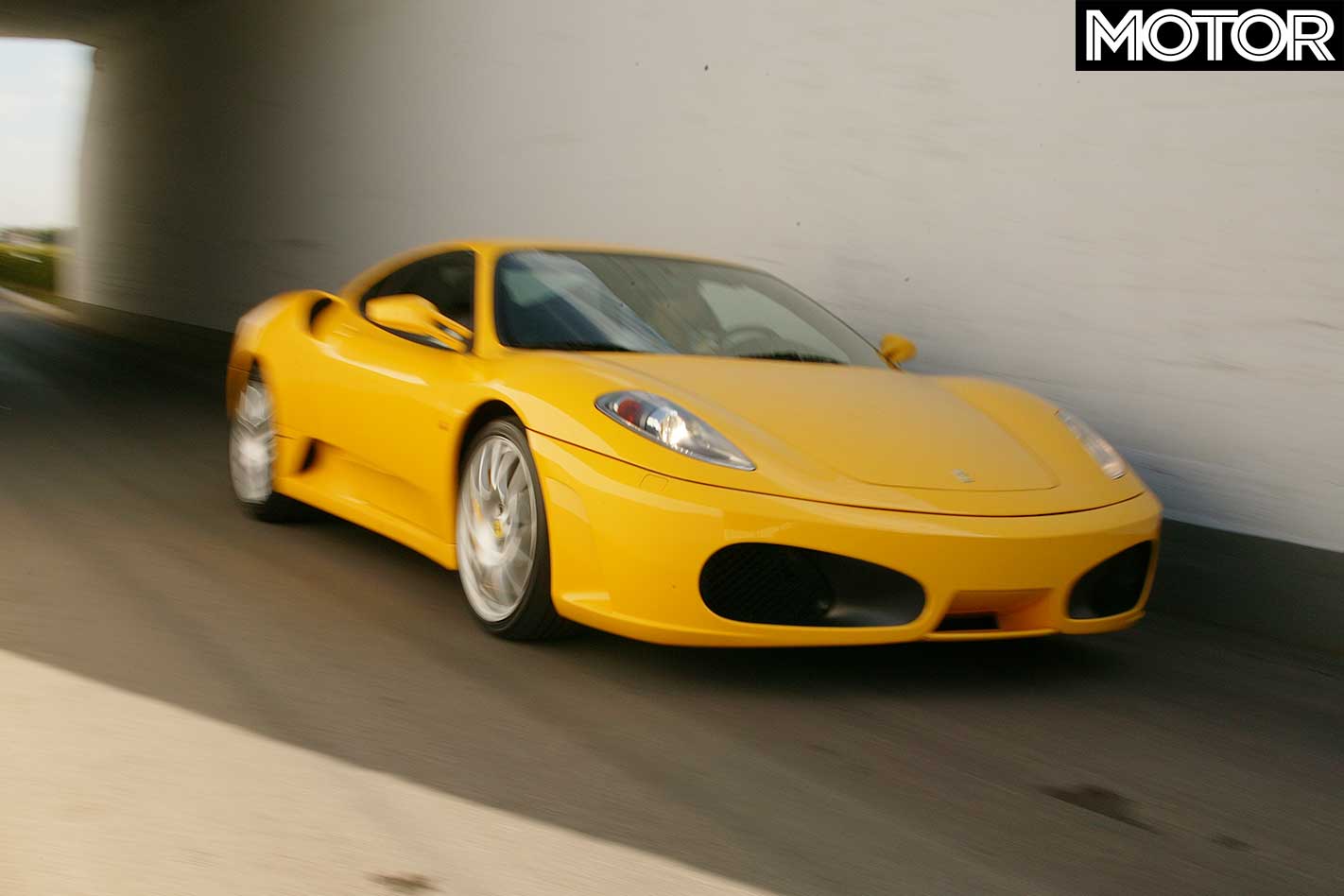
FAST FACTS 2004 Ferrari F430
BODY: 2-door coupe DRIVE: rear-wheel ENGINE: 4.3-litre V8, 32-valve POWER: 360kW at 8500rpm TORQUE: 465Nm at 5250rpm COMPRESSION: 11.3:1 BORE/STROKE: 92.0mm x 81.0mm WEIGHT: 1450kg POWER-TO-WEIGHT: 248kW/tonne TRANSMISSION: six-speed sequential manual SUSPENSION: double wishbones, coil springs, anti-roll bar (f & r) L/W/h: 4512/1923/1214mm WHEELBASE: 2600mm TRACK: 1669mm (f); 1616mm (r) BRAKES: 380mm cross-drilled & ventilated discs, six-piston calipers (f); 380mm cross-drilled & ventilated discs, four-piston calipers (r), ABS WHEELS: 19 x 9.0-inch (f), 19 x 11.0-inch (r) TYRES: Goodyear Eagle F1; 225/35 ZR19 (f), 285/35 ZR19 (r) FUEL: 95 litres, PULP PRICE: $420,000 (est)
Fiorano flight plan
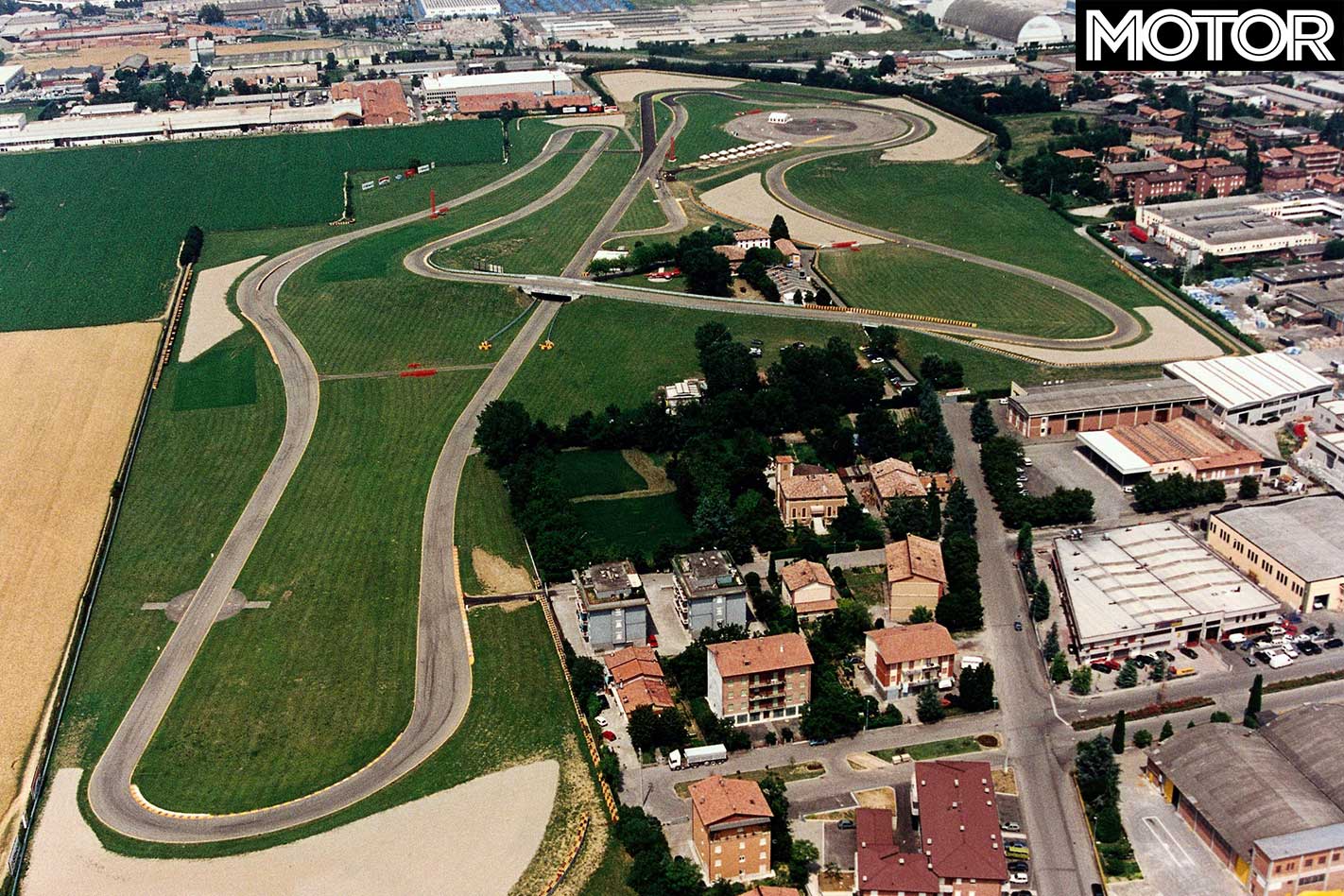
Ever wondered what a lap of Ferrari’s test track Fiorano would be like, in an F430? Here goes: the lights change to green, and we’re off, heading for the first right-hander which encourages a creamy second-gear slide onto a long ess. You coordinate the line with a mixture of steering and throttle, diligently refraining from putting down too much power too soon in order to save the front tyres.
Moments later it’s back into second, over the kerbs and up the hill to the right, then flat out over the bridge, braking hard for the right-hander only a tenth of a second before you can actually see it.
The next bit is easy: down the hill, late on the brake, turn in left and accelerate hard onto the back straight. The F430 wants to run wide, but a stab on the gas tightens the arc and we dart through the gap, briefly kissing the red-and-yellow rumble strips on both apexes before rocketing along the straight at the top of fourth gear.

